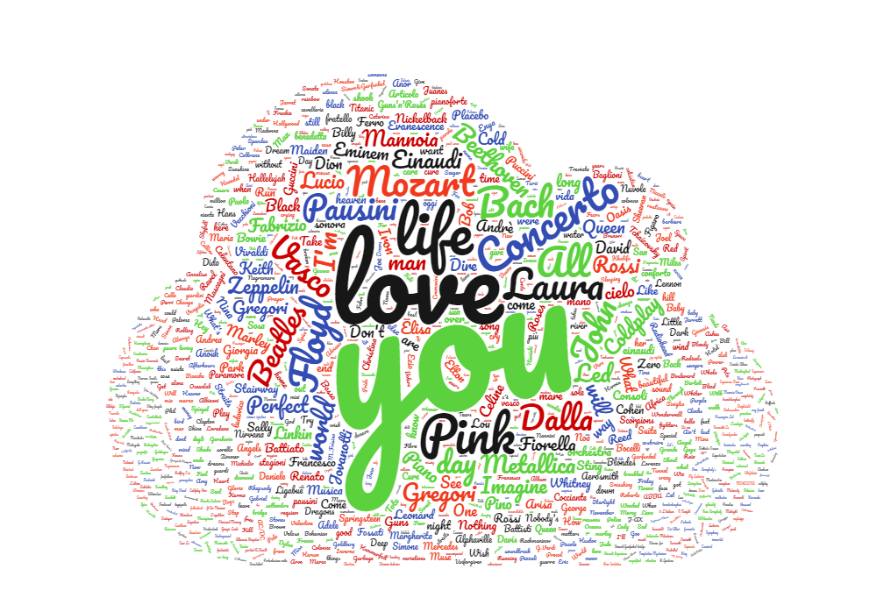Here we are with the first results of the playlist survey of the ten favourite music to listen in case of Fragility:
115 participants, 1115 music composed by songs, classic, melodies reported by at least four generations of people.
Participating countries:
Italy, Switzerland, UK, USA, Chile and Israel.
We have, for convenience, left English when present and translated all the common words
(from Italian French and Spanish) into English:
Prof. June Boyce Tillman is right when she says that there is not a possibility for a standard “music therapy“, given the micro-fragmentation of responses to the listening tastes of participants. Only very small clusters, something about classical music, including Bach, Mozart, Beethoven, something about rock and pop, Beatles, Pink Floyd, but the capillarization is extreme. Therefore, in line with what Prof. June Boyce Tillman says, a forced playlist of music therapy, with a system of loud speakers diffusion in the places of care, goes against individual taste. And more than this, it can cause discomfort. We received some answers that mentioned the importance of silence, or passive and casual listening, with a greater pleasure of unexpectedly evoked emotions as possible “therapy”.
However, in our attempt to find common shapes, here are the trends of musical choices in the topics, in the titles that talk about: You, in the first place as frequency of occurrence, the YOU of the boundary that becomes main character of the music, while the I is rarely mentioned, as if not aymore so important. The YOU is a word included in the Natural Semantic Metalanguage, as well as the I. The second word is Love, Amore, Amor, Amour, and also this word reinforces the issue of the emotional, passionate, emotional relationship. Love is not a word of Natural Semantic Metalanguage but we could deconstruct it to semantic atoms, in a somewhat hasty way: I feel good with you. You feel good with me. Regardless of the smallness or magnitude of this YOU (from the individual to the divine).
The third word is Life, this is already a universal semantic present in all the languages of the world. There is the attachement to the word LIFE and Living in case of fragility, there is the wish to be in this world.
And therefore, regardless of the fact that love has been one of the most sung themes for centuries, and therefore it is so easy to find so many songs and melodies dedicated to love, the word “life” is not so obvious, and it is a driving force that is called into play just when fragility – which tells us to handle us with care as we may break down, enters into our lives.
We will go on with the survey in the following months, but the most important thing is that you follow the advice of June Boyce Tillman:
“to each of your patients ask you to bring / or not bring yourself if you don’t want / your own play list in the care settings. They will probably be all personal and hardly interchangeable.”
The listenining and the narratives of your patients could be tools to understand the individual musical taste, so that therapy with music could be personalized and able to bring wellbeing.
Maria Giulia Marini and Matteo Nunner
